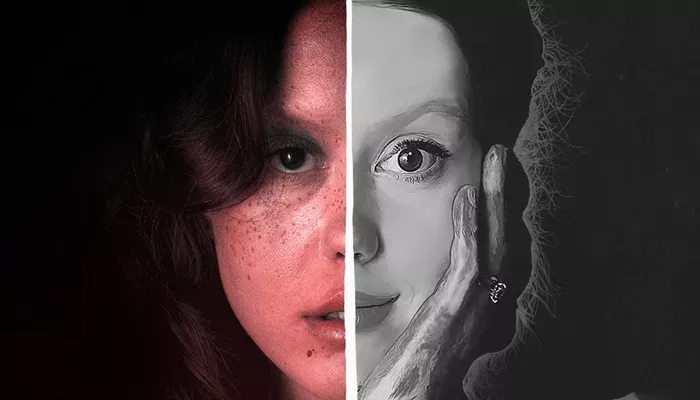When horror fans first encountered Ti West, he wasn’t an immediate household name. At just 25 years old, West made his debut with the supernatural thriller The Roost, a film that premiered at the South by Southwest festival but failed to attract major studio interest. Though it was eventually released on DVD, it went largely unnoticed. His follow-up, Trigger Man, garnered a respectable 82% on Rotten Tomatoes but underperformed at the box office.
It wasn’t until The House of the Devil (2009) that West found his distinct voice in horror cinema. The film tells the story of Samantha Hughes (played by Jocelin Donahue), a college student who accepts a mysterious babysitting job in a remote, eerie house. As the plot unfolds, it becomes clear that Samantha has fallen into the hands of a Satanic cult, who plans to use her as a human sacrifice. The film’s blend of slow-burning tension and atmospheric dread quickly set it apart in the genre.
Now, following the success of his X Trilogy (2022’s X, its prequel Pearl, and sequel MaXXXine), Ti West is more widely recognized, and it’s the perfect time to revisit some of his earlier works. The House of the Devil remains one of his finest films but is still relatively underappreciated by many horror fans. The movie’s retro style and B-movie allure are traits West later infused into the X trilogy. From its cinematography to its script, The House of the Devil showcases why Ti West is one of the most influential contemporary filmmakers in the horror genre.
A Slow-Burn Horror Masterpiece
Many horror films rely on jump scares to unsettle their audiences, but The House of the Devil takes a different approach. Instead of rushing to a quick fright, West allows the horror to simmer slowly. Viewers follow Samantha as she accepts a babysitting job at a run-down house she finds advertised for just $300 a month. Her landlord, Mr. Ullman (played by Tom Noonan), offers her a deal: pay the rent upfront and waive the deposit. Despite some warning signs, including a strange encounter with her best friend Megan (played by Greta Gerwig), Samantha takes the job.
The tension rises when she learns that instead of caring for a child, she’s tasked with watching over a sick elderly woman. As the night deepens, unsettling clues reveal the sinister nature of the situation. West’s script subtly builds unease, employing foreshadowing and dramatic irony that keeps the audience on edge. A standout moment is a scene early in the film involving Megan, which matches the intensity of the iconic elevator scene from The Departed.
Religious Horror with a Retro Touch
The House of the Devil draws inspiration from the religious horror genre of the 1970s and early 1980s. The film shares an aesthetic and pacing similar to classics like The Exorcist and Rosemary’s Baby, though it was made in 2009. West’s deliberate use of 16mm film and low-light shots give the film a grainy, VHS-like texture that evokes nostalgia for old-school horror fans. The cinematography, combined with the haunting soundtrack by Jeff Grace, also pays tribute to films like Halloween (1978).
The film’s visual style and atmosphere would resonate strongly with fans of classic religious horror. Its vintage look, from Samantha’s feathered hair to the hauntingly eerie score, provides a perfect homage to that era of horror. There’s even a scene where Samantha dances to The Fixx’s “One Thing Leads to Another,” its lyrics serving as a fitting metaphor for the escalating events of the night.
The Unsettling Cult Horror
As the night unfolds, West reveals the sinister truth behind the babysitting job. The film becomes a metaphor for a young woman who unknowingly walks into an increasingly dangerous situation, much like the protagonists in older cult horror films. The slow reveal of the house’s grim secrets is as effective as anything in The Wicker Man or The Omen.
In the climax, Samantha wakes up in the center of a pentagram, marked with mysterious symbols, and is forced to drink her own blood as part of a demonic ritual. Despite escaping the ritual, she is chased to a graveyard by Mr. Ullman, who insists she “accept her fate.” Her mind spirals as she sees visions of the demonic mother figure. The film’s ending is both terrifying and deeply symbolic of the relentless nature of evil forces.
Watch for Free on Tubi, Plex, and Pluto TV
For those tired of paying for streaming services, The House of the Devil is now available for free on Tubi, Plex, and Pluto TV. With just a quick download, horror fans can experience one of Ti West’s finest films in its entirety.
Following the success of the X Trilogy, West’s earlier work deserves revisiting, and The House of the Devil is an excellent starting point. It’s a slow-burn horror film that builds dread expertly, and with its retro style, it’s a fitting precursor to his more recent works. Fans of X, Pearl, and MaXXXine will see echoes of West’s trademark style here, making it a must-watch for anyone interested in the director’s career.
Related Topics
- Fans Applaud “Golmaal 5” on Release Day
- ‘Thug Life’ Premieres Amid Controversy, Box Office Buzz
- Ana de Armas Steals Spotlight in ‘Ballerina’

